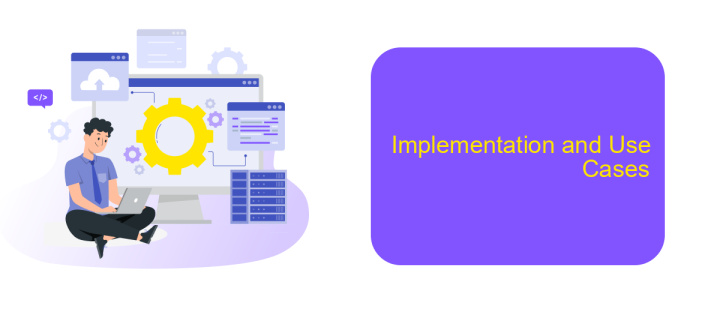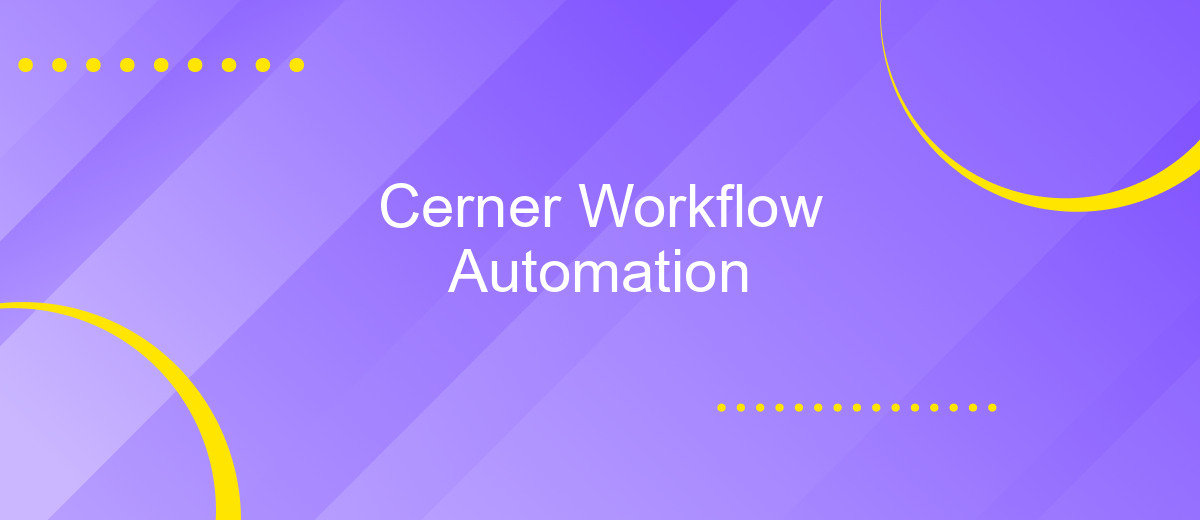Cerner Workflow Automation
Cerner Workflow Automation revolutionizes healthcare management by streamlining clinical and administrative processes. This innovative solution enhances efficiency, reduces errors, and improves patient care by automating routine tasks. With Cerner's advanced technology, healthcare providers can focus more on patient interactions and less on paperwork, leading to a more effective and responsive healthcare environment. Discover how Cerner Workflow Automation can transform your practice.
Introduction
Cerner Workflow Automation is a powerful tool designed to streamline and optimize healthcare processes. By automating routine tasks, healthcare providers can focus more on patient care and less on administrative duties. This system integrates seamlessly with existing healthcare technologies, ensuring a smooth transition and minimal disruption to daily operations.
- Increased efficiency by reducing manual tasks
- Improved accuracy and reduced human error
- Enhanced patient care through better resource allocation
- Seamless integration with existing systems
One of the key features of Cerner Workflow Automation is its ability to integrate with various third-party services, such as ApiX-Drive. ApiX-Drive facilitates the easy setup of integrations, allowing healthcare providers to connect different applications without the need for extensive technical knowledge. This ensures that all systems work together harmoniously, further enhancing the efficiency and effectiveness of healthcare workflows.
Benefits of Cerner Workflow Automation

Cerner Workflow Automation offers numerous benefits to healthcare organizations by streamlining processes and improving efficiency. One of the key advantages is the reduction of manual tasks, which minimizes human error and allows healthcare professionals to focus more on patient care. Automated workflows ensure that critical tasks are completed on time, enhancing overall productivity and reducing delays in patient treatment and administrative processes.
Another significant benefit is the seamless integration with various healthcare systems and applications. Tools like ApiX-Drive facilitate these integrations, allowing for smooth data exchange between Cerner and other platforms. This interconnectedness ensures that all relevant information is readily available, improving decision-making and patient outcomes. Additionally, workflow automation can lead to cost savings by reducing the need for additional staff and minimizing operational inefficiencies. Overall, Cerner Workflow Automation enhances the quality of healthcare services while optimizing resource utilization.
Key Features of Cerner Workflow Automation

Cerner Workflow Automation is designed to streamline healthcare processes, enhancing efficiency and reducing manual workload. The platform offers a range of features that cater to various needs of healthcare providers, ensuring seamless operations and improved patient outcomes.
- Automated Task Management: Automatically assigns and tracks tasks, ensuring that nothing falls through the cracks.
- Integration Capabilities: Easily integrates with other systems and tools, including ApiX-Drive, to ensure smooth data flow and interoperability.
- Real-time Notifications: Provides instant alerts and updates, keeping staff informed and responsive.
- Data Analytics: Offers robust data analysis tools to monitor performance and identify areas for improvement.
- Customizable Workflows: Allows for the creation of tailored workflows that meet specific organizational needs.
These key features make Cerner Workflow Automation a valuable asset for healthcare organizations. By leveraging tools like ApiX-Drive for seamless integrations, the platform ensures that all systems work harmoniously, thereby enhancing overall efficiency and patient care quality.
Implementation and Use Cases

Cerner Workflow Automation streamlines healthcare processes by integrating various systems and automating repetitive tasks. Implementing this solution involves setting up the necessary infrastructure, configuring workflows, and ensuring interoperability among different healthcare applications. This can be achieved through robust integration platforms like ApiX-Drive, which facilitate seamless data exchange between Cerner and other systems.
Using Cerner Workflow Automation, healthcare providers can significantly reduce manual intervention, thereby improving efficiency and accuracy. The system can be tailored to meet specific needs, ensuring that each workflow is optimized for the best possible outcomes.
- Automated patient data entry and updates
- Streamlined appointment scheduling and reminders
- Efficient medication management and prescription refills
- Enhanced reporting and analytics for better decision-making
By leveraging Cerner Workflow Automation, healthcare organizations can focus more on patient care and less on administrative tasks. The integration capabilities provided by platforms like ApiX-Drive ensure that all systems communicate effectively, resulting in a cohesive and efficient healthcare environment.
Conclusion
In conclusion, Cerner Workflow Automation offers a transformative approach to healthcare management by streamlining processes and enhancing operational efficiency. By automating routine tasks, healthcare providers can focus more on patient care, leading to improved outcomes and higher patient satisfaction. The integration of advanced technologies within Cerner's ecosystem ensures that healthcare facilities can adapt to the ever-evolving demands of the industry.
Furthermore, services like ApiX-Drive can significantly augment the capabilities of Cerner Workflow Automation by facilitating seamless integration with various third-party applications. This not only simplifies the process of data transfer but also ensures that all systems work in harmony, providing a unified and efficient workflow. As healthcare continues to evolve, leveraging such automated solutions will be crucial in maintaining high standards of care and operational excellence.
FAQ
What is Cerner Workflow Automation?
How can I integrate third-party applications with Cerner Workflow Automation?
What are the benefits of using workflow automation in Cerner?
How do I get started with setting up workflow automation in Cerner?
Is it possible to customize automated workflows in Cerner?
Do you want to achieve your goals in business, career and life faster and better? Do it with ApiX-Drive – a tool that will remove a significant part of the routine from workflows and free up additional time to achieve your goals. Test the capabilities of Apix-Drive for free – see for yourself the effectiveness of the tool.

